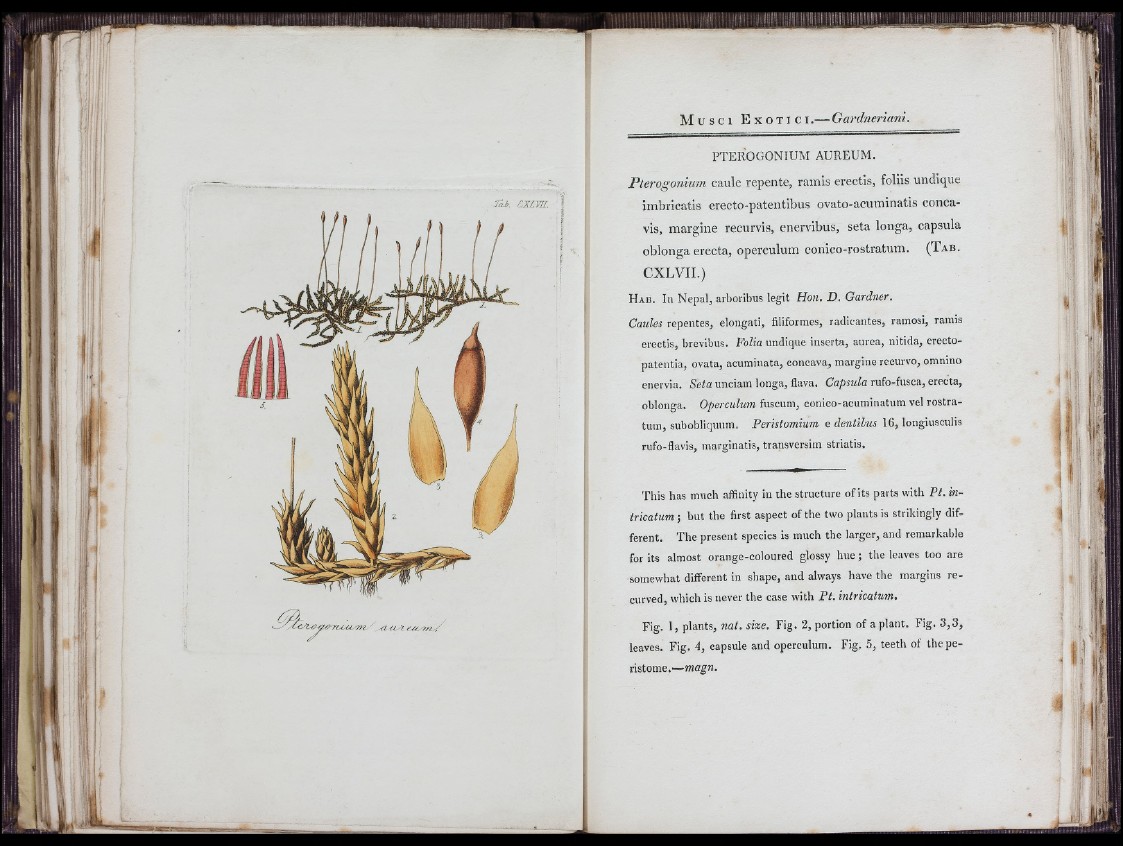
r
15:
à'.U .|
.'■■I: y
i l i
I
I
l l
' I
■ È:
'■I
i i 7 ■ S?:l
n é
Tab. c x im . *
1
. . yOc/u,p.<ynyM,m ' x i UX
PTEROGONIUM AUREUM.
P te ro g o n ium caule rep en te , ram is ere c tis, foliis u n d iq u e
im b ric a tis e re c to -p a te n tib u s o v a to -a cum in a tis c o n c a vis,
m a rg in e recurvis, en e rv ib u s, se ta lo n g a , capsula
o b lo n g a e re c ta , o p e rcu lum c o n ic o -ro s tra tum . (T a b .
CXLVII.)
Ha b . In Nepal, arboribus legit Hon. D. Gardner.
Caules repentes, elongati, filiformes, radicantes, ramosi, ramis
erectis, brevibus. Folia undique inserta, aurea, nitida, erecto-
patentia, ovata, acuminata, concava, margine recurvo, omnino
enervia. Seta unciam longa, flava. Capsula rufo-fusca, erecta,
oblonga. Operculum fuscum, conico-acuminatum vel rostratum,
subobliquum. Peristomium e dentibus 16, longiusculis
rufo-flavis, marginatis, transversim striatis.
This has much affinity in the structure of its parts with P t. in-
tricatum ; but the first aspect of the two plants is strikingly different.
The present species is much the larger, and remarkable
for its almost orange-coloured glossy h u e ; the leaves too are
somewhat different in shape, and always have the margins recurved,
which is never the case with P i. inlricatum.
Fig. 1, plants, nat. size. Fig. 2, portion of a plant. Fig. 3 ,3 ,
leaves. Fig. 4, capsule and operculum. Fig, 5, teeth of theperistome.—
i! M ■
-Ai mMl
■il